There is a magical place, not far from our mountain home, where environmentally conscious soul searchers rub shoulders with Lamborghini driving eccentrics.
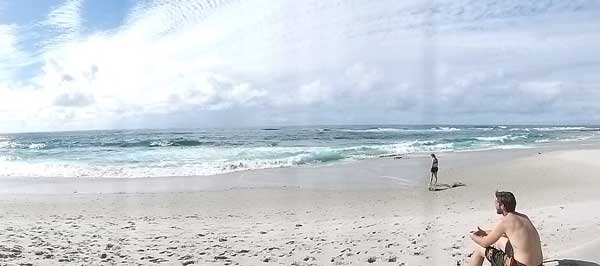 This is a place where the sun shines 300 days a year and rain is feared; where average people become near-mythical beings when they place both feet on a plank of foam and wood. This place is called San Diego, and recently a group of instructors braved its perils in a search for truth, or at least the beach.
This is a place where the sun shines 300 days a year and rain is feared; where average people become near-mythical beings when they place both feet on a plank of foam and wood. This place is called San Diego, and recently a group of instructors braved its perils in a search for truth, or at least the beach.
 To the north of La Jolla (a San Diego suburb and home to University of California: San Diego) along the coast is the long sandy stretch of beach known as La Jolla Shores. This is a marine sanctuary full of surfers, runners, beachcombers, and tons of marine life. Within a few feet of shore, leopard sharks swim with stingrays and guitarfish. Ospreys and peregrine falcons hunt from the cliffs nearby. Seals and dolphins bodysurf within feet of surfers.
To the north of La Jolla (a San Diego suburb and home to University of California: San Diego) along the coast is the long sandy stretch of beach known as La Jolla Shores. This is a marine sanctuary full of surfers, runners, beachcombers, and tons of marine life. Within a few feet of shore, leopard sharks swim with stingrays and guitarfish. Ospreys and peregrine falcons hunt from the cliffs nearby. Seals and dolphins bodysurf within feet of surfers.
 To the south is a beach not known as well as The Shores- Marine Street. To get to this sandy stretch surrounded by rock reef, one must navigate through a confusing maze of streets, park on a side road, and finally climb down a retaining wall. It is worth the trek. For body surfing, there are few places finer. The water is blue, clear, and waves pound right on the shore. SCUBA divers and spear fishers swim offshore, exploring the rock reefs there.
To the south is a beach not known as well as The Shores- Marine Street. To get to this sandy stretch surrounded by rock reef, one must navigate through a confusing maze of streets, park on a side road, and finally climb down a retaining wall. It is worth the trek. For body surfing, there are few places finer. The water is blue, clear, and waves pound right on the shore. SCUBA divers and spear fishers swim offshore, exploring the rock reefs there.
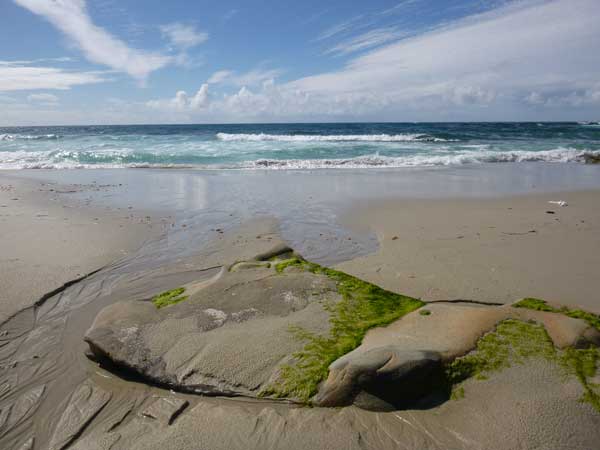 For the more exploratory minded, check out the rocks of Windansea. These sedimentary rocks hold the marks of countless waves lapping against them, forming tide pools that could be small and shallow or large and deep. It is here that the effects of erosion can be appreciated; as the tides rise and fall, they create rivulets that slowly eat away at the rocks. There are few sharp corners; rounded edges lend an otherworldly feeling.
For the more exploratory minded, check out the rocks of Windansea. These sedimentary rocks hold the marks of countless waves lapping against them, forming tide pools that could be small and shallow or large and deep. It is here that the effects of erosion can be appreciated; as the tides rise and fall, they create rivulets that slowly eat away at the rocks. There are few sharp corners; rounded edges lend an otherworldly feeling.
In this littoral zone (the area between the high tide and the low tide line) live a plethora of life. It is impossible to say what form of life is most common, though sea anemones and sea snails are definite contenders. A lucky explorer may even find an octopus or see small fish hiding under ledges.
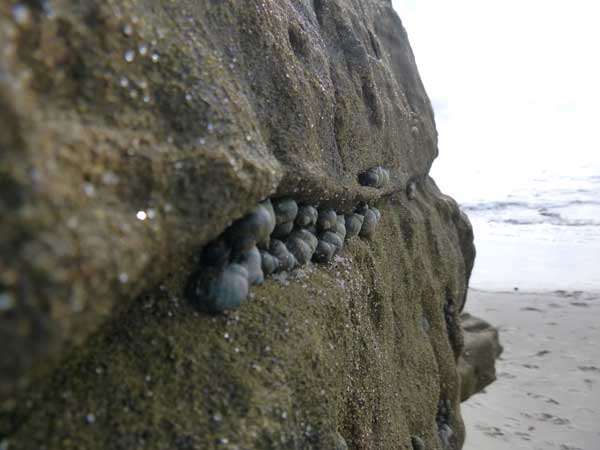 Flora thrives among the fauna as well. Can kelp be called flora? It is not a plant, though kelp shares some characteristics. Kelp has the ability to produce its own food from sun, water, and carbon dioxide, but not from green light. Instead of chloroplasts, this algae uses red-brown photosynthetic cells that absorb red light. As solar energy passes through water, visible wavelengths are weeded out, starting with violets and ending with the reds. Regardless, bull kelp washes on shore, eelgrass sprouts clings to the rocks, and succulents climb towards the beach.
Flora thrives among the fauna as well. Can kelp be called flora? It is not a plant, though kelp shares some characteristics. Kelp has the ability to produce its own food from sun, water, and carbon dioxide, but not from green light. Instead of chloroplasts, this algae uses red-brown photosynthetic cells that absorb red light. As solar energy passes through water, visible wavelengths are weeded out, starting with violets and ending with the reds. Regardless, bull kelp washes on shore, eelgrass sprouts clings to the rocks, and succulents climb towards the beach.
 Another great site is the infamous human-made bay called Children’s Pool. In 1932, a seawall was constructed to make a protected bay where children could play without worrying about waves. Unfortunately, it was not children who took advantage of the spot, but rather harbor seals and sea lions. Today the pool is completely taken over by these marine mammals that relax on the beach between meals.
Another great site is the infamous human-made bay called Children’s Pool. In 1932, a seawall was constructed to make a protected bay where children could play without worrying about waves. Unfortunately, it was not children who took advantage of the spot, but rather harbor seals and sea lions. Today the pool is completely taken over by these marine mammals that relax on the beach between meals.
 Quite often students arrive at High Trails with little or no experience hiking through the woods. Instructors comment on this, either lamenting their inexperience or encouraging their excitement. We forget, however, that these students live their lives in Orange and L.A. County, where forested areas are few and far between. For them, the wonders of the ocean deep can provide as much mystery as our mountains do for us.
Quite often students arrive at High Trails with little or no experience hiking through the woods. Instructors comment on this, either lamenting their inexperience or encouraging their excitement. We forget, however, that these students live their lives in Orange and L.A. County, where forested areas are few and far between. For them, the wonders of the ocean deep can provide as much mystery as our mountains do for us.
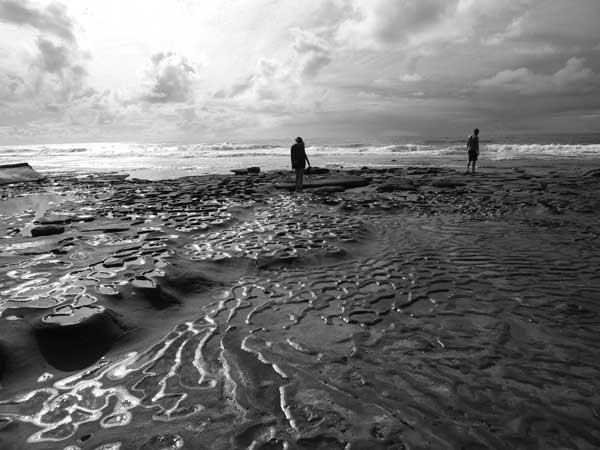 For further reading: Ricketts, E. F., Calvin, J., & Hedgpeth, J. W. (1962). Between Pacific Tides: An account of the habits and habitats of some five hundred of the common, conspicuous seashore invertebrates of the Pacific Coast between Sitka, Alaska, and northern Mexico. Stanford, Calif: Stanford University Press. Ecosystems: Kelp Forests. http://sanctuaries.noaa.gov/about/ecosystems/kelpdesc.html
For further reading: Ricketts, E. F., Calvin, J., & Hedgpeth, J. W. (1962). Between Pacific Tides: An account of the habits and habitats of some five hundred of the common, conspicuous seashore invertebrates of the Pacific Coast between Sitka, Alaska, and northern Mexico. Stanford, Calif: Stanford University Press. Ecosystems: Kelp Forests. http://sanctuaries.noaa.gov/about/ecosystems/kelpdesc.html
At High Trails Outdoor Science School, we literally force our instructors to write about elementary outdoor education, teaching outside, learning outside, our dirty classroom (the forest…gosh), environmental science, outdoor science, and all other tree hugging student and kid loving things that keep us engaged, passionate, driven, loving our job, digging our life, and spreading the word to anyone whose attention we can hold for long enough to actually make it through reading this entire sentence. Whew…. www.dirtyclassroom.com

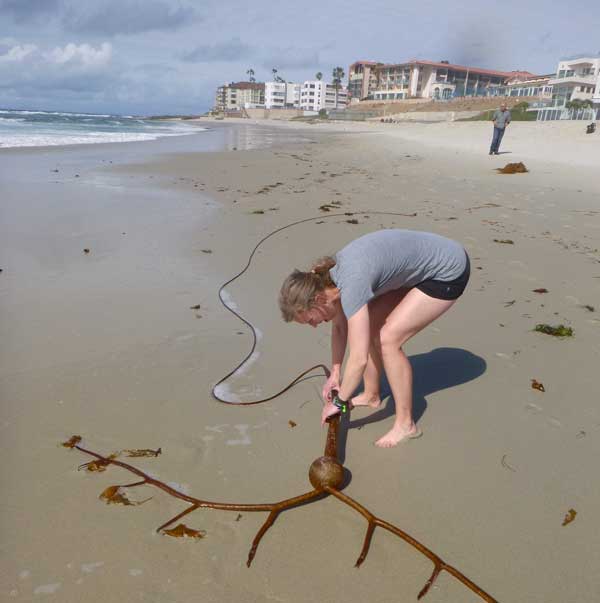
Comments are closed.